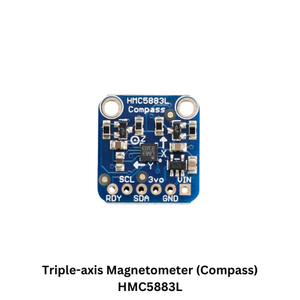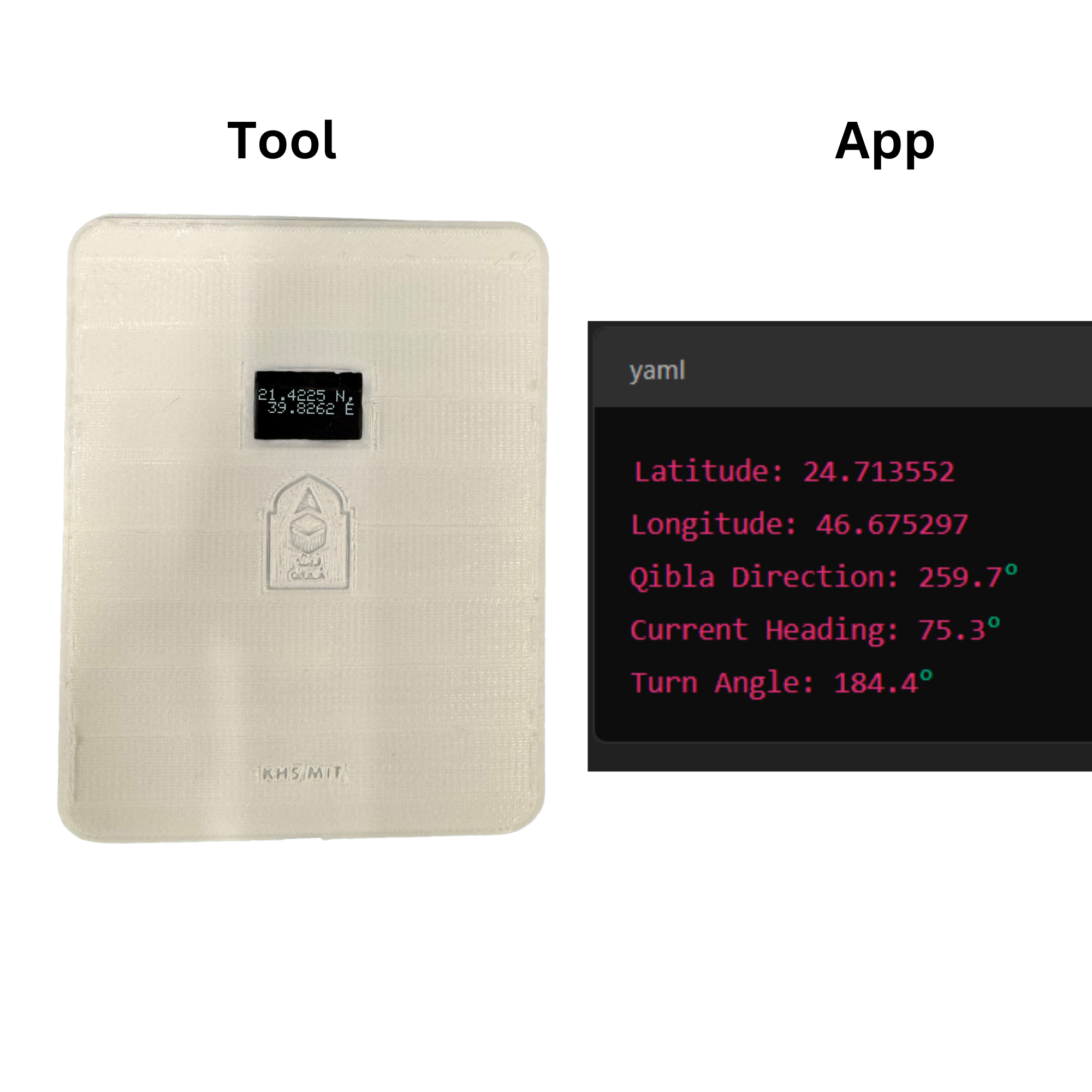Giving the Design Function
This Qibla Finder system leverages the NEO-6M GPS module to determine the user’s exact latitude and longitude, providing a starting point for Qibla direction calculations. The HMC5883L magnetometer acts as a digital compass, measuring orientation to ensure the device aligns accurately with geographic north. The ESP32 microcontroller serves as the system’s brain, integrating GPS and compass data to compute and display the Qibla direction. Finally, the 0.96” OLED I2C display presents the output visually, offering a clear and user-friendly interface. Together, these components create a portable, precise, and efficient Qibla Finder ideal for real-world applications.
This schematic integrates an ESP32 microcontroller with a Neo-6M GPS module, HMC5883L compass sensor, and an OLED display, creating an efficient system for a Qibla Finder. The GPS module provides the device's geographic coordinates, while the compass sensor determines orientation by measuring Earth's magnetic field. These inputs enable precise Qibla direction calculation relative to the user's location and facing direction. The OLED display visually communicates the direction to the user. The ESP32’s Wi-Fi capabilities and low power consumption make it ideal for a portable, real-time Qibla Finder, combining accuracy and accessibility for seamless use in modern applications.
Making a Casing (and learning a lesson).
Just like how they made it a hand-held device back then, I wanted to do the same thing. However, I learned many lessons on my way to making the casing for this. First off, this is when I realized there was so much unneeded PCB space in this project to be practical. It’s functional, but it could have been smaller if I wasn’t doing a map and solely focusing on the functionality. It ended up being a big box with a small screen at the middle top.
I tried to use up the extra space on the casing with a emblem of your typical Qibla finder. However, that came out horribly due to the way I oriented it for printing after the design to avoid using supports (big mistake) and put its face on the tray. This led to the engravings being a nightmare to polish up and inferior results.
Lesson learned, for the final project, make sure engravings are always NOT on the printing bed.
.jpg)
.jpg)



 (1).png)
.png)
.png)
.png)

.png)
